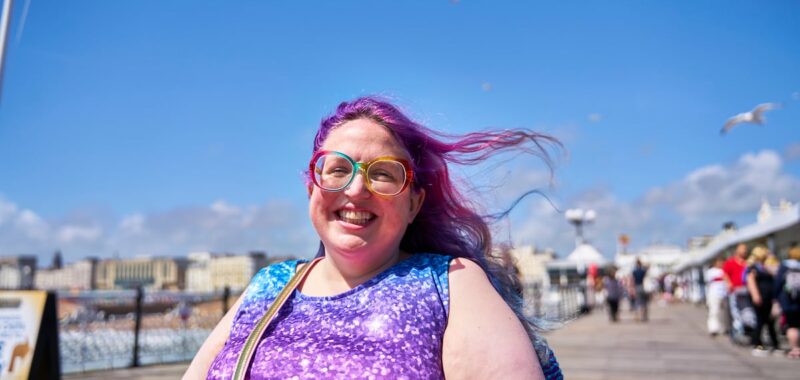
Global beauty insight platform BEAUTYSTREAMS has identified Adaptive Beauty as one of the biggest trends redefining inclusivity in 2025. Centering on “how developments that make beauty more accessible for specific demographics can benefit everyone,” Eleonora Mazzilli, Trend Localization & Business Development Director, North America, told CosmeticsDesign, Adaptive Beauty means crafting products and services to open up the world of beauty and personal care to those who are differently-abled.
With the European Accessibility Act set to take effect in 2025, experts like Mazzilli are strongly encouraging beauty brands to proactively embrace inclusivity by designing products that cater to individuals with disabilities and aging consumers.
Driving forces behind Adaptive Beauty
A key driver of the Adaptive Beauty trend is the sheer number of consumers facing physical challenges. According to the World Health Organization, “An estimated 1.3B people are experiencing a significant disability, a figure that represents 16% of the world’s population,” Mazzilli noted.
Unfortunately, many consumers still consistently struggle with the essential task of shopping for beauty products. Visual impairments, issues with dexterity, and mobility problems can make identifying, opening, or using products effectively challenging. While society is making strides toward inclusivity through accessible design, gaps in product accessibility remain.
Additionally, the aging population is reshaping the beauty landscape. “According to the United Nations, the number of people aged 65 years or older worldwide is projected to more than double, rising from 761 million in 2021 to 1.6 billion in 2050,” Mazzilli stated. Older adult consumers often have unique beauty and personal care product needs resulting from reduced dexterity and mature or sensitive skin.
Adaptive Beauty tech
Brands are leveraging AI, wearable devices, and innovative packaging to enhance the consumer experience. “By integrating high-tech elements into packaging, brands can create designs that are more interactive as well as dynamic, adding value and functionality to products while improving the overall consumer experience,” Mazzilli explained.
For example, she illustrated that P&G’s Pantene brand has implemented NaviLens technology, an advanced QR code system designed to assist visually impaired consumers. This tool allows individuals to scan a product from various angles and distances, receiving audio descriptions of key product information.
Similarly, Mazzilli shared that The Estée Lauder Companies (ELC) UK and Ireland have launched the Voice-Enabled Makeup Assistant (VMA), an AI-powered mobile app that provides real-time voice feedback to visually impaired users, helping them apply makeup accurately.
Shiseido has also developed a similar online beauty consultation service to address the needs of deaf and hard-of-hearing individuals, she explained. The technology incorporates sign language and chat-based functionality to facilitate more accessible interactions.
Another standout innovation comes from Brazilian brand Boticário, which has developed a smart lipstick that applies itself using AI and sensor technology. “The smart lipstick’s AI system recognizes the edges of the lips from a photo taken by the device’s cameras,” and “based on the information obtained, the system sends the correct coordinates for the application to the applicator,” Mazzilli described. The self-application process can prevent smudging, making makeup more accessible to individuals with visual or physical impairments.
Inclusivity and customization: Meeting consumer expectations
Modern beauty consumers expect brands to embrace personalization, making Adaptive Beauty a natural extension of this movement. “Personalization in all forms is now a standard that beauty consumers expect from brands and retailers,” Mazzilli emphasized.
Consumers across different ages, races, and cultural demographics are increasingly demanding beauty products that reflect their individuality – which also extends to physical limitations and abilities. “While the human species is one, there are countless differences when it comes to ethnicity, age, religion, ability, size, gender identity, and sexuality,” she said.
The growing need for increased inclusivity is also a core driver for innovation in beauty industry formulation, packaging, and marketing strategies.
A growing number of cosmetics and personal care product brands are already addressing the unique needs of diverse consumers. For instance, companies like Mielle Organics are developing hair care products specifically for textured hair, as well as brands like Urban Skin Rx, which offers skin care solutions that cater to the physiology of melanin-rich skin.
“Brands have no choice but to cater to consumers’ multi-hued skin tones, various hair textures, and cultural diversity with formulations, ingredients, and beauty campaigns that celebrate consumers’ diversity,” Mazzilli added.
Overcoming challenges in Adaptive Beauty
While Adaptive Beauty presents significant opportunities, brands face challenges in fully integrating inclusivity into their product lines. “Brands now better recognize the importance of moving toward an intersectional approach by highlighting under-represented consumers and championing diversity and inclusivity in product and service development,” Mazzilli said.
One of the biggest hurdles is designing products that incorporate universal design principles while maintaining aesthetic appeal and functionality.
Developing accessible packaging is particularly crucial. “It is key to explore new ways to make packaging speak to as many people as possible, as not all consumers have the ability to read, grab, hear, smell, or feel equally,” Mazzilli explained.
As brands strive to design and produce more inclusive products, participatory design, which includes consumers with disabilities in the development process, is rapidly gaining traction in the beauty industry and becoming more mainstream.
Embracing opportunities
For cosmetics and personal care manufacturers, Adaptive Beauty offers various opportunities for brands to differentiate themselves within their market share. Oral care, for example, can greatly benefit from innovative Adaptive Beauty-focused launches, as consumers with disabilities across all demographics often struggle with oral hygiene.
“To drive meaningful change within the oral care industry, brands can design oral hygiene products for those with special needs, making oral health more inclusive, accessible, and positive,” Mazzilli suggested.
Additionally, growing pressure from the aging population for adaptive personal care products will only continue to increase over the next decade. Brands can explore solutions such as adaptive packaging that is easy to grip and hold and personal care products that address skin concerns linked to aging.
“We expect to see beauty brands targeting the geriatric beauty market with targeted solutions to counteract aging body odor and personal care products that address skin issues associated with incontinence,” Mazzilli concluded.

